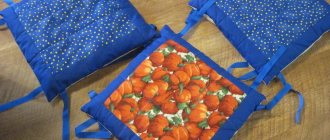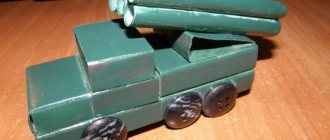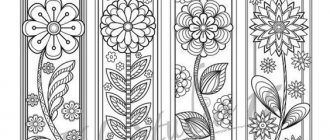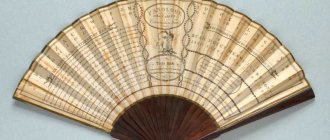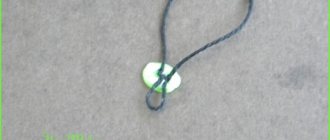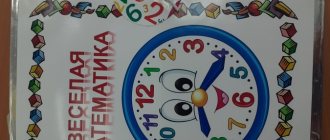I will try to tell you how to make a home gaming complex from scrap materials in this post. So, we had two tents, which can now be connected into one, using a homemade tunnel between them..
We will need two tents with round holes, an old toy basket, or rather a metal frame from it.
And also fabric (I have old curtains), bias tape 5-10 m and, of course, threads, needles and other sewing accessories. Adhesive plaster 2-3 cm wide.
We measure the diameter of the holes in the tents, multiply by 3.14, and get the width of the tunnel. I got 164 cm on one side, 148 cm on the other. Fold the fabric in half, and set aside half the dimensions from the fold + reserves (allowances) for seams of 1-2 cm. The length of the tunnel is about 50 cm, in principle, no more is needed.
We sew the seam and fasten it with bias tape.
Next we make loops for the buttons, I made them from bias tape, 8 pieces on each side, 7-8 cm long. Fold it in half and sew it symmetrically to the very edge. Next we finish the edge with bias tape. For strength, it is better to sew the loops again, stepping back 1 cm from the edge.
Now the fun part, we attach the bias tape in a circle with a spiral. Please note that the ends of the bias tape extend onto the spiral with a decent margin, forming rings. It is better to make these rings at a distance of 4-6 cm from the edge, then you will understand why.
Where the rings and spiral meet, it is better not to stitch it, otherwise you will have to rip it out later.
We carefully insert the frame into the workpiece; this is a rather painstaking process. Spread evenly throughout the tunnel. It’s okay if the tunnel turns out to be a little wrinkled in the middle, the main thing is that the circles at the edges coincide with the holes in the tents or are slightly smaller.
The bias tape turned out to be on the inside, but it can be done on the outside as well, as the frame will screw in. We will protect our product. We wrap the adhesive tape around the end of the frame so that it forms a small bump.
Next, we glue the end of the frame to the formed ring with an adhesive plaster, it’s like closing a circle. We do the same from the other end. Now our frame will not spin inside the tunnel and will not come out anywhere.
We sew up all the holes.
Now we take 16 different buttons of medium or large size, the main thing is that they fit through the loops, and sew them to the edges of the tent, but not at the very edge, but at a distance of 3-5 cm. We fasten the tunnel. Ready!
Once again, a general plan for clarity.
From another entrance. As you can see, the diameters of the entrances are different and are at different heights, but this does not interfere with climbing back and forth. The tunnel is quite movable and flexible, and is firmly attached to the tents.
I sewed homemade curtains as a decorative element, there are ties to keep the window open.
And, just as importantly, this entire structure can be easily folded into a pancake and put away against the wall or under the bed (sofa).
Initially, my idea was to make an additional entrance to the tent, but then I remembered that there was an old tent, patched it up and off we went.. I hope my MK was useful, although I perfectly understand that not everyone needs it. It was important for me to convey not only the idea, but also to show those interested how to execute it. My children, by the way, are absolutely delighted!
Thank you for your attention!
Oh, I'm first, right? Very cool tents and tunnel. And most importantly, it's easy to do. Thanks for MK)
Thank you
Yeah! Super job! You can come up with something else! ABOUT! I came up with an idea! You can take a hoop, cover it with curtains in a circle and sew it to the exit of one of the tents, and hang the hoop from the ceiling. it will turn out to be a kind of mini-town
How to make a playground next to your house with your own hands
Previously, the space under the terrace was not used and was a spontaneous warehouse for all sorts of “useful things”. Because There are two exits from the terrace, and the terrace is quite high. It was decided to make a children's playground. In addition to the slide and sandbox, under the terrace there is a cozy place with a children's playhouse, and on the wall of the house there is an additional drawing board and a shower with a tap for washing hands and feet.
The space under the terrace will later be partitioned into two parts - in one there is a children's playground, in the other there is a place for storing garden tools. First, taking into account waterproofing, a wooden frame was made for the platform.
Then the soil for the sandbox and the area near the slide was removed. This is the hardest part of the job.
In the area under the sandbox and next to the slide, ebbs were made and sand and crumb rubber were poured for children's playgrounds.
Safe Haven
Where do owners find their pets: in suitcases, on the shelves of wardrobes, under the bathtub, beds, in shoe boxes. Very often, animals choose completely unsafe places. They get into bags and packages, into an open oven (especially if it is warm), into a microwave oven or into a washing machine. Cats have a natural need for warmth and protection, and their instinct constantly tells them to be vigilant while sleeping.
To prevent your pet from being tempted to hide in the wrong place, it is better to provide it with a safe, secluded cat house, where it can curl up and take a quiet nap. Pet stores offer an endless variety of sleeping places and cat shelters: beds, houses, tunnels. Making a house yourself is quite difficult. It's better to buy it. You can make a bed with your own hands.
How to make a tree house with your own hands
Usually, fairly large trees are taken for a tree house; if there are no such trees in your garden, you can make a platform for the site, which will be mounted both on the tree and on wooden posts in the corners.
Instead of driving several small bolts into the wood, it is better to use one larger one.
The order of work is as follows: first, two beams are attached to the tree, then a frame under the platform is installed on them, which in our case is reinforced with posts at the corners of the platform.
Paper Tunnel Book: ideas, diagrams, templates, master classes
- Shatterstock is a great place to get ideas for photos, vectors, and illustrations related to Tunnel Book. There will be many ordinary tunnels and trains, but among them you can also find what interests us.
- Here you can see stock photos about the paper tunnel technique. This is a kind of master class showing how to make a cube tunnel out of paper .
- A book on how to make cards and other crafts using the Tunnel Book technique can be ordered here.
How to make your own playground
Such a playground has everything a child wants - a house, a swing, a slide, a ladder, a sandbox.
Such designs are the constant favorites of kids.
And no matter how complicated the site plan may look for a young dad, in reality it is a small square platform on which a children’s house is being built.
Such a platform is a simple and attractive design that looks good in any corner of the garden.
What is the structure?
There are 2 types of play tunnels for cats:
- vertical;
- horizontal.
The first have the advantage that they take up little space and enable four-legged animals to realize their natural instincts - to climb to heights. On the “floors” of the wall structure there are toys that the fluffy will enjoy spending time with. The second option combines 2 things that minke whales love - play and several places to rest. Labyrinths can have many branches for travel.
DIY children's playground in a rustic style
This children's playground is made according to the same principle, but instead of a children's house, a beautifully decorated gazebo is made on supporting posts, which also serves as a canopy for the sandbox on a hot day.
Children love summer most of all because they can spend almost the whole day outside. Children's playground projects can be completely different - from the simplest to the fantastically beautiful. But in any case, a do-it-yourself playground will allow you to truly fulfill one important dream of your baby.
Did you like our site? Join or subscribe (you will receive notifications about new topics by email) to our channel in MirTesen!
I’m not good at mathematics at all, I’m a philologist by training. I am sewing a tunnel for a child, I need to lay the frame in a spiral, the formula is such that the brain can be broken. I fought with her anyway, and it still doesn’t work out for me! Help, calculate for me, please!
The diameter of the tunnel is 50 cm, the length of one turn is 38 cm. A total of 4 turns.
“The length of one turn is calculated simply by the Pythagorean theorem: L^2=(Pi*d)^2 +t^2, where L is the length of 1 turn, d is the diameter of the turn, t is the pitch of the turn. Number of turns n=l/t, where n is the number of turns, l is the length of the wound section. The total length of the spiral is L(total) = (l/t)*sqrt((Pi*d)^2 +t^2).”
Why is this necessary?
Throughout their “evolutionary life,” these animals seek shelter in order to feel protected from large predators. In an open area, a cat is practically unable to relax and fully rest - to do this, it needs to hide in a safe place. Of course, our pets do not experience such constant stress; they are able to sit comfortably in a chair, on the kitchen table, and even on their owner’s head. However, they sometimes get nervous, not finding a quiet place where they could hide from troubles and wait out some time. A tunnel for a cat is simply necessary, especially if the animal has a shy character or has just arrived in the house.
Wild cats need shelter not only for protection from predators, but also for hunting. A pet, no matter how lazy it may be, is also a hunter. And deep down, each of them dreams of catching valuable prey. If there are no suitable objects for this, the owner’s feet are used as they pass by the cat sitting in ambush.
Pets rarely walk outside, so they don’t move enough, which can harm the animal’s health. Boxes, cabinets, tunnels are objects that help maintain the required level of activity for the cat.
Wicker house made of wicker
You can weave a wicker house yourself. But an easier way is to use a ready-made basket. It is necessary to remove the handle, line the bottom with a thick cloth with foam rubber, and make a hole in one of the walls for entry, which also needs to be trimmed with a soft cloth.
For softness, it is better to place a rug made of fleece, sheepskin or fur on the bottom of the home.
Delicious "walnut" staircase
From the empty shells of several walnuts you can make an excellent toy for your pet. In addition to the empty shell halves, you need to prepare in advance:
- a thin nail with a sharp end;
- hammer;
- a strong thread as long as the height of the cell;
- medium size washer.
In all prepared half-shells, you need to carefully make a hole in the center. This is done by driving a nail (there is no need to leave it in the resulting hole). You need to thread a thread through the holes to make the shells into a kind of beads. An important nuance - all halves must be turned in one direction, with the exception of the last one. In a vertical position, the beads look like a stack of bowls standing on a tubercle.
A washer is tied to the end of the thread coming out of the last (lower) shell so that the thread is securely fastened and the structure does not fall apart. The upper end of the thread is tied to the “ceiling” of the cage so that the lower shell lies on the bottom, but the “beads” do not sag. You need to put treats for the hamster in all the resulting bowls. Climbing the structure, the pet will take away a tasty prize at each stage of “conquering the peak”.
The height of the structure must be respected. Hamsters climb beautifully, but they descend simply by jumping. Therefore, you should not use shells from more than several nuts for one construction.
In addition, it is important to provide your pet with a soft landing - the bedding in the area of the toy should be thicker
Range
A variety of tunnels are presented in the form of different designs, dimensions and materials of manufacture.
- compact models - primarily performing the functions of a shelter and sleeping place for a pet, their length is limited to 30-50 centimeters, are made of soft and cozy fabrics, and are available on the website in the assortment of the Fauna Int and IPTS brands;
- play structures - give animals more space, are made from soft and rustling fabrics that provoke the cat to play, are equipped with additional moves and branches, are presented in the Triol, Ferplast, Zolux, Trixie and Dezzie lines;
- modular tunnels - can be used independently, as well as as part of labyrinths and playgrounds, have spacious dimensions with a stroke diameter of 40 cm, are additionally equipped with toys and scratching posts, you will find the most complete range at Kitty City.
Durable and high-quality materials are used to make play tunnels for cats:
- plush is a soft and warm fabric that does not cause allergies;
- nylon is a traditional dense and durable fabric that can withstand active movements;
- polyester is a hypoallergenic material for making rustling structures, it is wear-resistant and durable.
Also, most models are available in several color options, allowing you to choose the most suitable design for your interior.
Second way. Making a wigwam
Making a children's wigwam tent with your own hands is not difficult, and it's also interesting. In the summer, children can play in such a hut in the yard, pretending to be tireless Indians.
Before sewing the wigwam, we will first prepare a drawing and diagram showing the tent. To get the job done accurately, important details must not be overlooked.
Let's prepare the following materials:
Steps to create a children's tent with your own hands:
Filter wells
The simplest structures are filter wells. Their main advantage is compactness. However, such a structure can only be constructed when the volume of wastewater is small (up to 1 m³/day), the soil has good filtering abilities, and the water supply system is located deep underground (below 3.5-4 m). Wells are made of concrete rings, polyethylene, polypropylene, fiberglass, etc. Their walls must have evenly distributed holes with a diameter of 40-60 mm and a total area of at least 10% of the wall surface.
The wells are buried 2.5-3 m into the ground, installed on a gravel-crushed stone base with a height of at least 20 cm. In their lower part, a filter is provided in the form of a backfill of gravel and crushed stone. Depending on the type of soil, the backfill fraction varies: in sand - 20-40 mm, in sandy loam - 5-20 mm, in loam - 3-10 mm. It is not allowed to use limestone or dolomite crushed stone due to their fragility. The height of the filter can vary from 20-30 cm in the case of sandy soils to 1 m in the case of light and medium loams. From the outside, the well is also covered with gravel and crushed stone (layer width - 30 cm) up to the pipe entering from the septic tank, then usually covered with a geotextile membrane and covered with soil. The membrane prevents soil from penetrating into the filter. The top of the well is covered with a hatch with a lid made of cast iron, plastic, etc.
Source
Theoretical basis of the infinity effect
also used the illusory effect of an endless mirror (during fortune telling on Christmastide, girls placed a burning candle between two mirrors). Infinity in reflection from a mirror surface arose due to multiple reflection of the light source from a real and imaginary mirror.
If you are interested in how a real and imaginary reflective surface have the same optical properties, a textbook on studying quantum physics will help you.
Advantages of tunnel systems
Practice has shown that air exchange in tunnel structures creates comfortable conditions for the life of processing aerobic bacteria
- Installation of tunnel drainage, which is more efficient in operation, allows you to save money by reducing the material consumption of the work performed.
- Polypropylene systems have a long service life: after dismantling, cleaning from sludge and replacing the filter shell, tunnel blocks can be used repeatedly.
Types of filtration structures
Their choice depends on the performance of the device and individual conditions on the site.
They are a well with a gravel cushion - a bottom filter at the bottom. Through it, wastewater seeps into the soil, undergoing preliminary treatment.
This is a system of perforated pipes that are laid on a crushed stone bed. The top is covered with soil and covered with geotextile. Unlike wells, they can have a significantly larger wastewater dispersion area and high productivity.
They are a type of underground filtration fields. Instead of pipes, special tunnels or, in other words, drainage elements are used here. They perform the same function as pipes in an aeration field, dispersing runoff. But due to their shape and size, the tunnels significantly increase the effective contact area of the wastewater with the soil and the efficiency of the system.
Drainage for a septic tank: types, installation features, load calculation
The key to good operation of a non-volatile autonomous sewage system is a properly designed soil filtration system. Unlike biological treatment stations, where water can be drained into a drainage ditch, a septic tank only pre-clarifies the wastewater and requires a final stage of post-treatment. But which type of filtration structures is better? Let's take a closer look.
Original example
Cats are always up to something, which is why the owners of one of them decided to transfer her energy into a peaceful direction. They built a secret cat tunnel in a private home in San Francisco so that their furry friend can walk around the entire room without ever stepping on the floor or computer keyboard. After all, she has her own shelter in the steampunk style. This design looks absolutely stunning, reminiscent of Kathryn Bigelow's early work. Using the right materials and tools, you can make a tunnel for your cats and your pets with your own hands. Checked: everyone will have fun.
First, think about where exactly to build the cat tunnel. The Californian design bureau Because We Can, whom the cat's owners contacted to implement their plan, decided to build a tunnel around the perimeter of the room, hanging it on large hooks.
When looking for a suitable place, think about what your cat likes to do. Most of them love to hide, peek out from hiding places, jump on tall pieces of furniture and look down on everything. This lifestyle was taken by the designers as a basis when developing the project. The entrance to the tunnel is located above an old chest that has been in this room for a long time. There is nothing easier for a cat than to jump on a chest and then dive into a secret hole.
Laid at the junction of the walls and ceiling, the tunnel forms many so-called viewing platforms, from where the cat can spy on its owners.
Windows, reminiscent of embrasures or portholes, allow the cat to “follow the object” (that is, the owners) from a hiding place.
After circling the room, the tunnel emerges onto the top shelf of a high shelving unit. Fortunately, the shelving unit is also a Because We Can creation, so the designers put a protective fence there in case the cat, having had its fill, falls asleep too close to the edge. The fence is made of aluminum slats and corners with round holes. Both are sold at most hardware stores.
The tunnel body is a waxed cardboard tube that is used for casting concrete products.
This cheap material can be easily purchased at a hardware store and cut with a regular jigsaw. The designers cut off the top of the pipe (about a quarter of the diameter) so that the cat can “survey its territory” from above, plus it makes the pipe easier to clean. The designers then painted the outside of the pipe to make it look like it came from an old factory. First they applied a primer, then a layer of silver paint, and finally paint that imitated worn bronze. The inside of the pipe was covered with fabric, which is used to cover acoustic speakers in a car. It has a lot of advantages: it is inexpensive, it is easy to cut and creates the friction necessary for comfortable walking inside a cylindrical surface. Once you cut off the top of the cardboard tube, it will no longer hold its shape. To turn it into a cylinder again, it was necessary to make supporting rings, which, like hooks, secured the pipe to the wall. All hooks and rings were cut from plywood. Tip:
We recommend using a stencil to draw the detail on the plywood; All that remains is to cut it out with a jigsaw.
This is what the stencil for the support ring looks like. It was made specifically for this project. Parts 2 cm thick were cut out of plywood.
This is a stencil for cutting out fastening hooks. It was also made from plywood 2 cm thick.
To make the hooks look more textured, it was decided to give them a more interesting shape. These decorative elements were cut from MDF 1.3 cm thick; they were attached to hooks on both sides.
After cutting out the rings, hooks (pictured) and decorative elements, they were coated with primer and painted.
This gave the elements a more “industrial” look. If you do not have the opportunity to paint parts with aerosol paint, use a foam roller rather than a brush - this way the paint will go on more evenly. Connect the wood pieces together using blind nuts and round head screws. All that remains is to securely attach the entire structure to the wall: try to find the places where the support beams pass. Attach the structure to them with dowels and screws. If you cannot find beams, use extra strong fasteners such as anchor bolts. If you can’t do it yourself, invite a professional. As a result, you will get a tunnel that looks like an industrial pipe with a very happy cat walking along it! Materials:
- Waxed cardboard pipe with a diameter of 30 mm
- Soft felt-type fabric
- Screws with round heads
- Blind nuts
- Glue
- plywood sheet
- Primer
- Silver paint
- Spray silver paint
Filtration drainage wells
Popular buildings. They are made of plastic, concrete rings, brickwork.
The most modern options are plastic wells. When choosing, attention should be paid to the quality of the product, the reliability of the locking connections, and the thickness of the walls. It is better to give preference to well-known brands, they are carefully calculated.
Compared to reinforced concrete options, plastic drainage wells are easier to install, since creating masonry, as well as installing rings, is a rather labor-intensive process. Factory wells usually have special perforation, which increases the effective area of the structure.
Regardless of the material, the main element in any drainage is the bottom filter. They are backfilled with crushed stone of a fraction of 15-30 mm, placed inside the well. The height of the bottom filter should be from 30 cm to one meter, depending on the load.
The useful surface of the well is calculated by the sum of the areas of the bottom of the well and its internal walls, plus the height of the filter.
Let's take a drainage well 1.5 m high, 1 m in diameter with a filter thickness of 0.5 m. Remembering the formulas for calculating the area of the walls of a cylinder and a circle, we will establish that with the given parameters, the useful rounded surface is equal to 2.35 m².
Next, using the filtration coefficient table, we calculate the permissible load, which will depend on the type of soil on the site.
The correction factor for wells is 1-1.2.
Source
Tunnel made of water fittings
This design requires money, but is easier to assemble and maintain. To assemble the structure, you do not need special skills. Plumbing fittings connect like a construction set and are easily placed at any angle. At the end of such a play complex, build a compartment where the animal will play.
Take several 19 liter bottles and fill them with ping pong balls or plastic caps. Suitable filling is silica gel cat litter. It is safe and non-toxic. How you spend your day depends on how carefully you approach the problem of creating a play set for your pet.
If your pet likes the toy, you won’t have to worry about his whereabouts. The animal will not rummage in flower pots and trash cans, climb under the bathtub or play mischief on the balcony. All this will be replaced by a homemade tunnel.
Hamster toys
Hamsters living in the wild are constantly on the move. They are forced to look for food, run away and hide from enemies. For domestic animals there is no need for this - there is food, there are no attacks from predators. But a life of safety and prosperity does not relieve hamsters of the need for activity. In order for your pet not to become “fat” and to remain vigorous and healthy, it is necessary to provide him with proper leisure time. The best option is active games. Special devices are designed to help organize them.
Toys for animals should be focused on finding treats and movement. These tasks can be either combined in one multifunctional device or distributed among different devices - monofunctional.
The first include devices containing “hard-to-get” treats. To get to a tasty prize, the hamster will have to try hard - run, rummage, climb, etc. These are any structures where you can hide a treat for the furry champion. Even stairs are included in this category, as the prize can be placed on the top step.
Other toys, in which there is no place to hide treats, are exclusively sports equipment - these are running wheels, etc. Of course, multifunctional toys can also be used only as exercise equipment
But it is important to remember that the animal must have an incentive to exercise. And there is no better incentive for a hamster than the alluring aroma of a treat.
